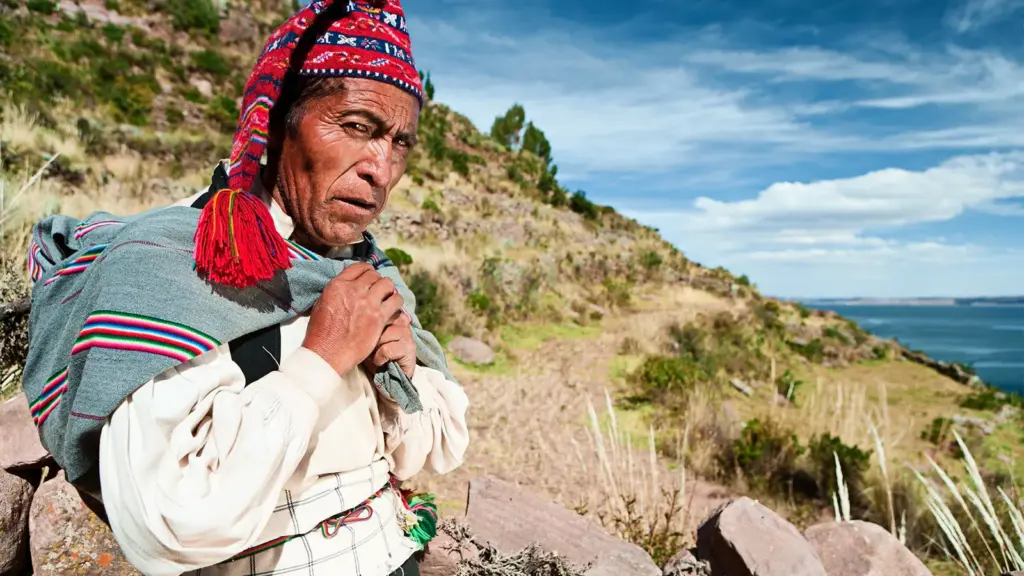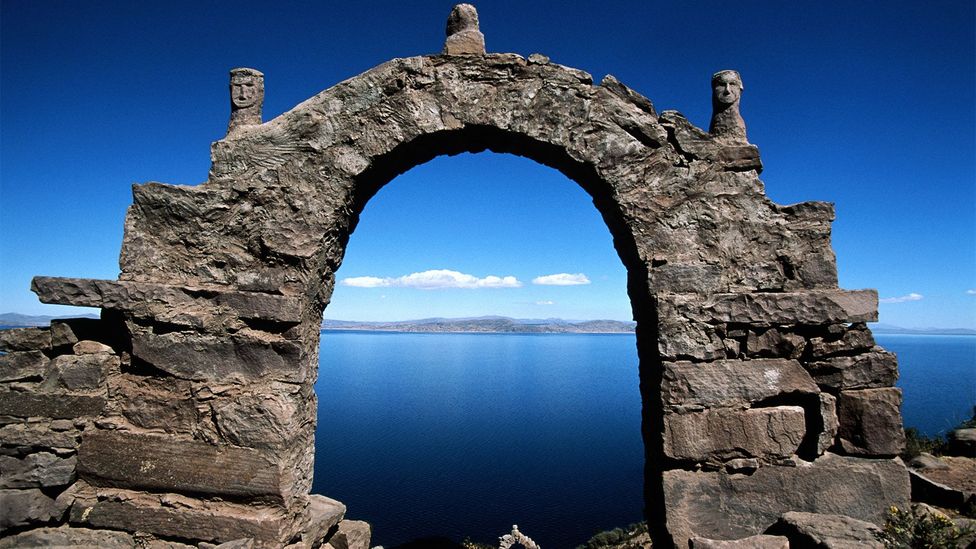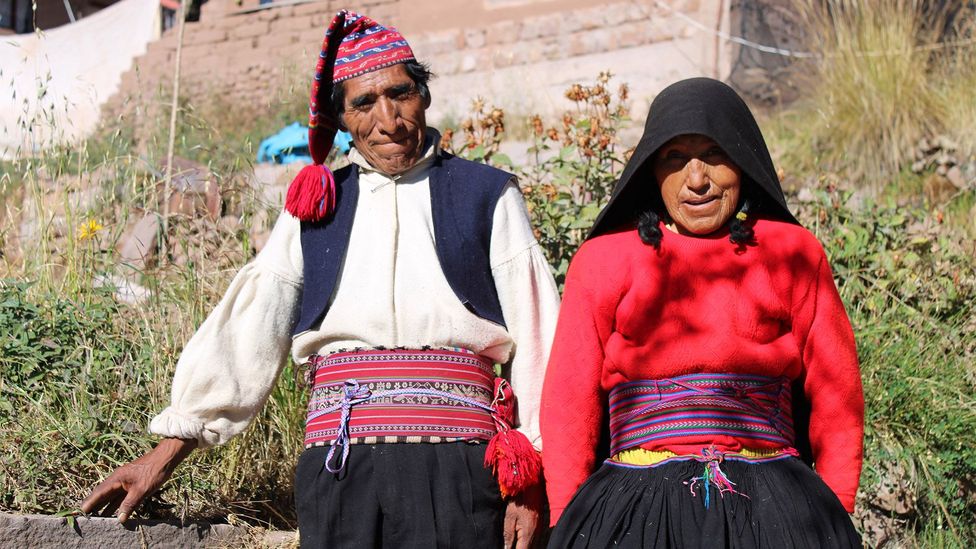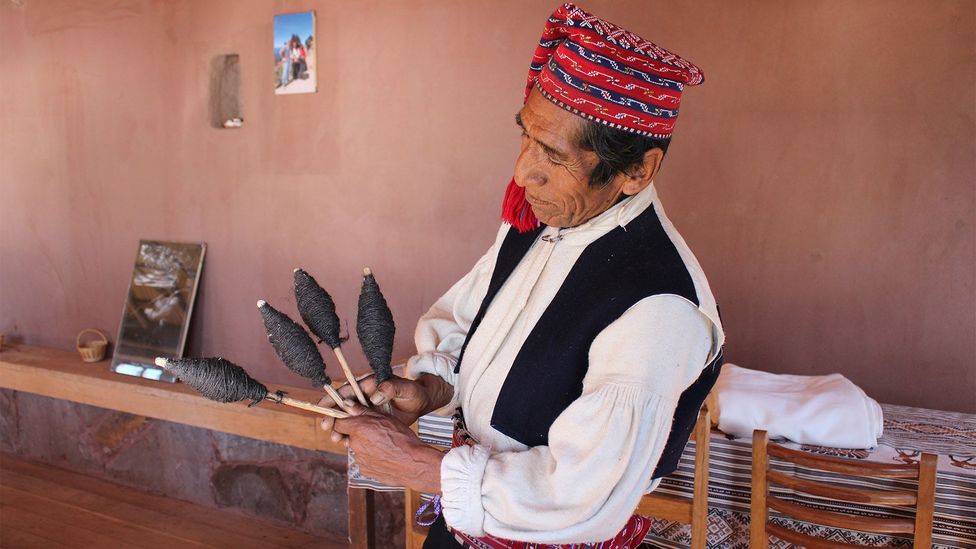Hat’s reveal men’s marital status, dreams and aspirations
For almost 500 years, men on this small Peruvian island have drawn in accomplices by weaving elaborate Andean caps.
On the small Peruvian island of Taquile, a man’s worth isn’t estimated in his capacity to hunt or fish, however in his capacity to weave.
Alejandro Flores Huatta was born on the 1,300-man island, which is situated on the Peruvian side of Lake Titicaca, a three-hour boat ride from the closest city of Puno. The 67-year-old figured out how to weave the notorious chullo (a tall, floppy Andean cap) as a youngster, with his more seasoned sibling and granddad showing him by utilizing the thistles of a cactus as sewing needles.
“The vast majority of individuals learn by looking, watching. Since I don’t have a dad, my older sibling [and grandfather] trained me to sew. So by watching, I learned gradually,” he said, talking through a Quechua interpreter.

Taquile is popular for its materials and clothing, and keeping in mind that ladies weave and watch out for the sheep that give the fleece, men are the ones who only produce the island’s sewn caps. The chullos are viewed as socially critical, assuming a key part in the island’s social construction and permitting men to show their innovativeness while likewise showing their conjugal status, dreams and goals a few men even use it to show their temperament. It’s a custom that islanders are striving to safeguard.
Occupants were moderately cut off from the central area until the 1950s, and the island’s separation has assisted with keeping its legacy and lifestyle flawless. Local people comply with the Inca code of “Ama sua, ama llulla, ama qhilla”, (Quechua for, “Don’t take, don’t lie, don’t be apathetic”). Taquileans are ranchers customarily; the six island networks alternate to pivot harvests of potato, corn, beans and grain in patios on the mountainsides. They raise sheep, guinea pigs, chickens and pigs on the land and fish in the lake. The travel industry started off during the 1970s, giving local people a type of revenue with a huge number of guests attracted to the island yearly to visit the towns and encompassing the lake. Guests ordinarily stay with local people in humble, family-run facilities; assist in gathering crops; attempt neighbourhood fortes like singed trout and potatoes with rice, beans and mint tea; and buy the island’s popular hand-tailored materials.
In 2005, Taquile’s material workmanship was considered important to such an extent that Unesco considered it an Intangible Cultural Heritage of Humanity. Alejandro is one of the seven men on the island perceived as a Master of Textiles, alongside the island’s leader, Juan Quispe Huatta.
The practice has been around for the majority of 500 years, with establishes in the old civilisations of the Inca, Pukara and Colla people groups. The Inca specifically, thought carefully along these lines to the Taquilean chullo, to show the particular badge of their specific region however that is the place where the likenesses end. The Taquilean chullo and the Inca crowns look immensely changed. The seniors of the island recount the chullo configuration showing up with the Spanish success in 1535, and Alejandro’s granddad passed on accounts of the early heroes wearing comparative caps that were white with ear covers, “however not similar examples or images,” Alejandro said.

Taquilean young men are taught to weave from the age of five or six, with the ability passed down starting with one male then onto the next. The first chullo a kid weaves is white, however, he’ll later utilize sheep fleece coloured with privately sourced plants and minerals, and the strategy is refined until he’s ready to sew a cap that is tight and flawless. It’s a carefully sluggish interaction – even the most experienced knitters on the island need the better piece of a month to make a chullo because of the unpredictable examples and explicit iconography reflecting rural, occasional and familial emblems.
The chullos additionally assume a key part in matching youthful couples. Men are picked by their mates dependent on their capacity to effectively weave a chullo with little wire-dainty needles. These days, a few men even use bike spokes. “We search for them since they are nice to weave [with]. They are dainty and they don’t break effectively,” Alejandro said.
As per Alejandro, the indication of a decent partner is one who can make a pin-tight chullo one weaved so well that it can hold water over huge distances when flipped around. Would-be fathers-in-law regularly test the chullos of their little girls’ likely potential husbands in this way. Alejandro gladly clarified that his chullo could hold water for up to 30m without losing a solitary drop, and was sufficiently noteworthy to draw in his significant other, Teodosia Marca Willy, 44 years prior.
“She saw great abilities clearly in my chullo. I used to make a great hat; I was a good knitter,” he said.

“The young ladies search for the best chullo. So in case you’re wearing a decent hat, you have more [chances] to get a girlfriend prior and quicker,” added Juan, clarifying that it’s a community spectacle when the father-in-law genuinely takes a look at the weaving nature of would-be grooms. “[When] the father-in-law [pours] the water in the chullo, then, at that point the husband to be must have the option to show the water in the chullo to everybody that is gathering there. All the family assembled must have the option to see the water in the cap,” he said.
While each chullo is just about as individual as the one who weaves it, the iconography and tones are frequently rehashed. There’s the six-petaled rose (a gesture to the island’s six networks); birds like the dairy cattle egret and the condor; and creatures like the sheep. Horticultural images additionally highlight intensely, as local people depend on local plants and blossoms to direct when is the best ideal opportunity to sow seeds or to pivot their yields of potato, quinoa or corn. Red fleece addresses antiquated slaughter, while blue is respect to Mama Cocha the encompassing lake that furnishes their local area with food.
“A man who weaves a great chullo, [only then] would he be able to be known as a man,” Alejandro said.
The chullos keep on changing all through a man’s life, contingent upon his status. New chullos are made when a man is hitched or separated or when his remaining on the island chain of command changes. “Some other time when this individual turns into a notable individual, a pioneer, a position, and he’s viewed as a senior… we need to change our chullo, wear an alternate one,” Juan said



